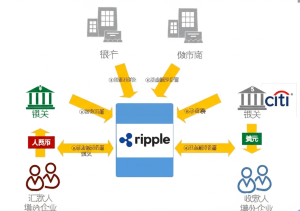
The cryptocurrency market has witnessed a transformative shift, largely driven by the rising popularity and integration of Bitcoin and Ether exchange-traded funds (ETFs). These financial instruments, designed to mirror the performance of the underlying digital assets, have become a key focus for both institutional and retail investors seeking exposure to the crypto space without directly holding the assets. Recent data reveals compelling trends in ETF inflows, signaling growing confidence in the long-term prospects of Bitcoin and Ether. This report explores the nuances of these inflow trends, dissecting the driving forces behind them and examining the potential implications for the broader crypto market.
The Meteoric Rise of Crypto ETFs: A Paradigm Shift
The introduction of Bitcoin ETFs marked a pivotal moment for the cryptocurrency industry. For years, regulatory hurdles and skepticism from traditional financial institutions kept Bitcoin at arm’s length from mainstream investment portfolios. However, the approval of the first Bitcoin ETFs shattered these barriers, opening the floodgates for institutional capital and paving the way for wider retail adoption. Ether ETFs followed suit, further solidifying the legitimacy of cryptocurrencies as investable assets.
Bitcoin ETF Dominance: A Bullish Trend
Bitcoin ETFs have consistently attracted substantial inflows, often surpassing those of other crypto investment products. The primary driver behind this dominance is Bitcoin’s status as the leading cryptocurrency, boasting the largest market capitalization and the most established track record. Investors view Bitcoin as a store of value and a hedge against inflation, making it an attractive addition to diversified portfolios.
Recent reports highlight several key trends in Bitcoin ETF inflows:
- Consecutive Weekly Gains: Bitcoin ETFs have experienced multiple weeks of consecutive net inflows, indicating sustained investor demand. For instance, one report noted a four-week streak of gains, with a substantial $769.60 million inflow during the first trading week of July.
- Multi-Billion Dollar Streaks: The inflow streaks have often reached multi-billion dollar figures, underscoring the magnitude of capital flowing into these ETFs.
- Record-Setting Weeks: Several weeks have seen record-breaking inflows, demonstrating the growing appetite for Bitcoin exposure through ETFs.
- Rebounding Inflows: Even after periods of outflow, Bitcoin ETFs have shown a remarkable ability to rebound, quickly attracting new capital and resuming their upward trajectory.
Ether ETFs Catching Up: A Rising Star
While Bitcoin ETFs have dominated the crypto ETF landscape, Ether ETFs have been steadily gaining traction, exhibiting impressive growth and attracting significant inflows of their own. Ether’s appeal stems from its underlying technology, Ethereum, which serves as the foundation for decentralized applications (dApps) and decentralized finance (DeFi) protocols. Investors see Ether as a play on the future of decentralized computing and the burgeoning DeFi ecosystem.
Key trends in Ether ETF inflows include:
- Extended Green Streaks: Ether ETFs have demonstrated remarkable consistency, with reports indicating extended periods of consecutive weekly inflows.
- Outpacing Bitcoin: In some instances, Ether ETFs have even outperformed Bitcoin ETFs in terms of weekly inflows, signaling a growing interest in Ethereum’s potential.
- Record Daily Inflows: Ether ETFs have achieved record single-day inflows, highlighting the increasing investor confidence in the asset.
Decoding the Drivers: What’s Fueling the ETF Inflow Frenzy?
The surge in Bitcoin and Ether ETF inflows can be attributed to a confluence of factors, reflecting the evolving landscape of the cryptocurrency market and the changing attitudes of investors.
Institutional Adoption: The Whale Effect
One of the primary drivers behind the ETF inflow surge is the increasing participation of institutional investors. These large players, including hedge funds, asset managers, and even corporate treasuries, are allocating capital to Bitcoin and Ether ETFs as part of their broader investment strategies. Institutional adoption lends legitimacy to the crypto space and provides a significant source of demand for these ETFs.
Retail Investor Enthusiasm: The Power of the Crowd
Retail investors, drawn to the potential for high returns and the innovative nature of cryptocurrencies, have also contributed to the ETF inflow frenzy. The ease of access and regulatory oversight provided by ETFs make them an attractive option for retail investors seeking exposure to Bitcoin and Ether.
Market Sentiment: Riding the Bullish Wave
Positive market sentiment surrounding Bitcoin and Ether has undoubtedly played a role in driving ETF inflows. As the prices of these cryptocurrencies rise, investors are more likely to allocate capital to ETFs, hoping to capitalize on the upward momentum. Conversely, during periods of market downturn, ETF inflows may slow down or even turn negative as investors reduce their exposure to the asset class.
Regulatory Clarity: A Green Light for Investment
The increasing regulatory clarity surrounding cryptocurrencies, particularly in the United States, has helped to alleviate some of the concerns that previously deterred investors. As regulators provide clearer guidelines and frameworks for the crypto industry, institutional and retail investors alike are becoming more comfortable allocating capital to Bitcoin and Ether ETFs.
Macroeconomic Factors: Inflation Hedge and Safe Haven
Macroeconomic factors, such as inflation and geopolitical uncertainty, have also contributed to the demand for Bitcoin and Ether ETFs. Investors view Bitcoin as a potential hedge against inflation, as its limited supply makes it resistant to the inflationary pressures of traditional fiat currencies. During times of economic or political turmoil, investors may also turn to Bitcoin and Ether as safe-haven assets, driving inflows into ETFs.
Implications for the Crypto Market: A Ripple Effect
The sustained inflow of capital into Bitcoin and Ether ETFs has significant implications for the broader cryptocurrency market.
Price Appreciation: Fueling the Bull Run
The increased demand for Bitcoin and Ether ETFs puts upward pressure on the prices of the underlying cryptocurrencies. As ETF providers purchase Bitcoin and Ether to meet investor demand, they effectively reduce the available supply, driving prices higher. This price appreciation, in turn, attracts more investors to the market, creating a positive feedback loop.
Increased Liquidity: Deepening the Market
The growth of Bitcoin and Ether ETFs has also increased the liquidity of the cryptocurrency market. ETFs provide a convenient and efficient way for investors to trade Bitcoin and Ether, making it easier for them to enter and exit the market. This increased liquidity reduces price volatility and makes the market more attractive to institutional investors.
Mainstream Adoption: Bridging the Gap
The success of Bitcoin and Ether ETFs is helping to bridge the gap between the traditional financial world and the cryptocurrency industry. By providing a familiar and regulated investment vehicle for accessing cryptocurrencies, ETFs are making it easier for mainstream investors to participate in the crypto market. This increased adoption is crucial for the long-term growth and sustainability of the cryptocurrency industry.
Conclusion
The recent surge in Bitcoin and Ether ETF inflows represents a significant milestone in the evolution of the cryptocurrency market. These ETFs have emerged as a powerful force, driving demand for the underlying cryptocurrencies, increasing liquidity, and facilitating mainstream adoption. As the regulatory landscape continues to evolve and institutional interest in cryptocurrencies grows, we can expect Bitcoin and Ether ETFs to play an increasingly important role in shaping the future of the crypto market. The convergence of traditional finance and digital assets is no longer a distant dream; it’s a rapidly unfolding reality, and ETFs are at the forefront of this transformation. The era of crypto integration has truly begun, with ETFs leading the charge towards a more accessible and mainstream future.





